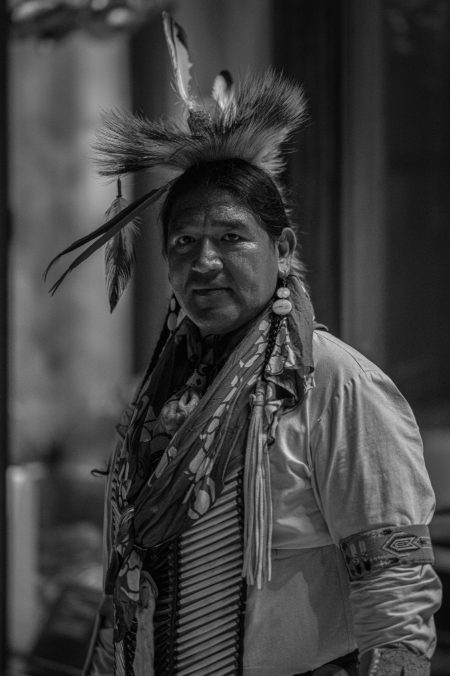- Details

Storytelling is a cornerstone of Native American culture, and modern technology is playing a vital role in preserving these traditions. Audio-visual services, such as those offered in Orange County, are essential in this cultural preservation effort.
In Native American communities, storytelling is more than just a tradition; it is a way of life. These stories, passed down through generations, hold the history, values, and beliefs of the community. As the world becomes increasingly digital, there is a need to adapt these oral traditions to modern formats. AV services provide a way to capture and share these narratives, ensuring they reach a broader audience while maintaining their authenticity. By utilizing these technologies, communities can preserve their cultural heritage for future generations.
Importance of storytelling in Native American culture
Storytelling in Native American culture serves as a vital tool for education and cultural preservation. These narratives often include lessons about nature, community, and spirituality, providing a framework for understanding the world.
Traditionally, these stories are shared orally by elders, who are the keepers of the community's history and values. As younger generations become more digitally oriented, there is a growing need to preserve these stories in formats that resonate with them. By recording these narratives, communities can ensure that their cultural heritage is not lost over time.
Beyond their educational value, these stories serve as a living connection to ancestral wisdom and tribal identity. Each narrative carries specific teachings about survival skills, moral conduct, and the interconnectedness of all living things.
The storytelling tradition also reinforces community bonds, as gatherings centered around these tales create shared experiences that unite tribal members across generations. In many tribes, certain stories are considered sacred and can only be told during specific seasons or ceremonies, emphasizing their spiritual significance. This oral tradition has survived centuries of challenges, demonstrating the resilience and adaptability of Native American cultures in maintaining their heritage despite external pressures.
Utilizing technology for cultural preservation
An Orange County AV service offers numerous opportunities to preserve Native American storytelling traditions. High-quality audio and video recordings can capture the nuances of these narratives, including the storyteller's delivery and emotional expression. Immersive technologies like virtual reality can create engaging experiences that allow audiences to connect deeply with the stories. Digital archives can also ensure that these narratives remain accessible for future generations, providing a valuable resource for cultural education and preservation.
Cloud-based storage solutions and streaming platforms have revolutionized how these stories can be shared and preserved. Digital databases allow tribes to catalog their oral histories systematically, creating searchable archives that researchers and community members can access remotely. Interactive multimedia presentations combine traditional storytelling with modern visual effects, making ancient tales more engaging for younger audiences without compromising their cultural integrity.
Mobile applications designed specifically for indigenous communities enable storytellers to record and share narratives directly from their smartphones, democratizing the preservation process. These technological tools also facilitate collaboration between tribes, allowing them to share best practices and create unified digital repositories that celebrate the diversity of Native American storytelling traditions across different regions.
Examples of technology in native events
Several initiatives have successfully integrated technology into Native American events, enhancing the storytelling experience. Film festivals focused on Indigenous storytelling use modern AV tools to showcase films that highlight tribal stories and customs. These events not only reach larger audiences but also provide platforms for indigenous voices in contemporary media. Similarly, cultural centers use digital installations to feature recorded stories, often accompanied by visuals depicting traditional life scenes. These installations invite viewers to engage directly with the content, making learning both educational and experiential.
Powwows and tribal gatherings have also embraced technology to expand their reach and impact. Live streaming capabilities allow community members who cannot attend in person to participate virtually, connecting diaspora populations with their cultural roots. Some tribes have created podcast series featuring elder storytellers, making their wisdom accessible to global audiences while preserving the oral tradition in a modern format.
Educational institutions have partnered with Native communities to develop interactive museum exhibits that use touchscreens and augmented reality to bring historical narratives to life. These technological integrations respect traditional protocols while ensuring that younger generations remain engaged with their cultural heritage in ways that align with their digital lifestyles.
Role of AV service providers in storytelling
Audio-visual service providers play a crucial role in enhancing storytelling experiences by offering the technical expertise necessary for high-quality productions. Their role involves selecting suitable equipment to capture both visual and auditory details accurately.
An experienced provider ensures optimal sound quality so every spoken word is clearly understood. They also focus on lighting and video aspects to complement the mood and tone of each story. Choosing competent AV services is critical because poor execution could detract from traditional narratives. Providers who understand cultural sensitivities help maintain authenticity while incorporating innovative solutions tailored to preserving oral traditions.
